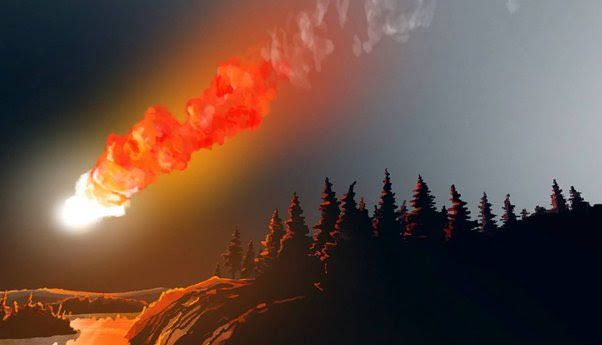The Tunguska Event: A Mystifying Cosmic Phenomenon and Its Intriguing Theories
June 30, 1908, began as an uneventful day in the quiet isolation of Siberia. Yet the peace was soon shattered when the sky erupted in an explosion with the energy of 12 to 15 megatons of TNT. This event, known as the Tunguska Event, is the most potent explosion of

June 30, 1908, began as an uneventful day in the quiet isolation of Siberia. Yet the peace was soon shattered when the sky erupted in an explosion with the energy of 12 to 15 megatons of TNT. This event, known as the Tunguska Event, is the most potent explosion of its kind recorded in human history.
The resultant shock wave flattened approximately 2,150 square kilometers of Siberian taiga, causing an estimated loss of 80 million trees and, tragically, at least three human lives. The impact was felt far beyond the Siberian expanse, with reports of atmospheric "skyglow" observed as far away as Europe and western Russia.
Over a century later, the exact cause of the Tunguska Event remains a subject of scientific debate and public fascination. The most accepted theory among scientists is that an asteroid or comet around 60 to 190 meters in diameter exploded in the Earth's atmosphere. However, the absence of an impact crater and the minuscule amounts of extraterrestrial material left behind have given rise to alternative, more sensational theories.
One such theory points to a terrestrial source: the genius inventor, Nikola Tesla. In 1908, Tesla was working on wireless energy transmission, culminating in the construction of his Wardenclyffe Tower in New York. Some believe that Tesla, testing his "death ray" or energy beam, unintentionally caused the Tunguska explosion. However, there is little empirical evidence to support this theory, and most scientists consider it unlikely.
An even more sensational theory is that the Tunguska Event was an extraterrestrial attack. Proponents of this theory speculate that a spaceship or weapon from an alien civilization exploded above Siberia. While this theory captures the imagination, no credible evidence has surfaced to validate these claims, and it remains firmly in the realm of science fiction.
Despite these imaginative theories, the consensus among the scientific community leans toward a natural cosmic occurrence, an asteroid or comet that exploded in the Earth's atmosphere. Yet, the allure of the unexplained and the mystique of the Tunguska Event continue to captivate the public's imagination, reminding us of our enduring fascination with the mysteries of the universe.
As we ponder the past, the Tunguska Event serves as a stark reminder of the cosmos's immense power and unpredictability. It underscores our need for vigilance in tracking near-Earth objects, an endeavor crucial to our planet's preservation and future generations' safety. Ultimately, the memory of the Tunguska Event continues to echo through the ages, a testament to the compelling and mysterious forces that shape our world and the universe beyond.




